You can’t climb Ireland’s Skellig Michael monastery island if the gods of rain, wind, waves and tides are against you. Sure, you can go to the lovely small village of Portmagee, County Kerry:
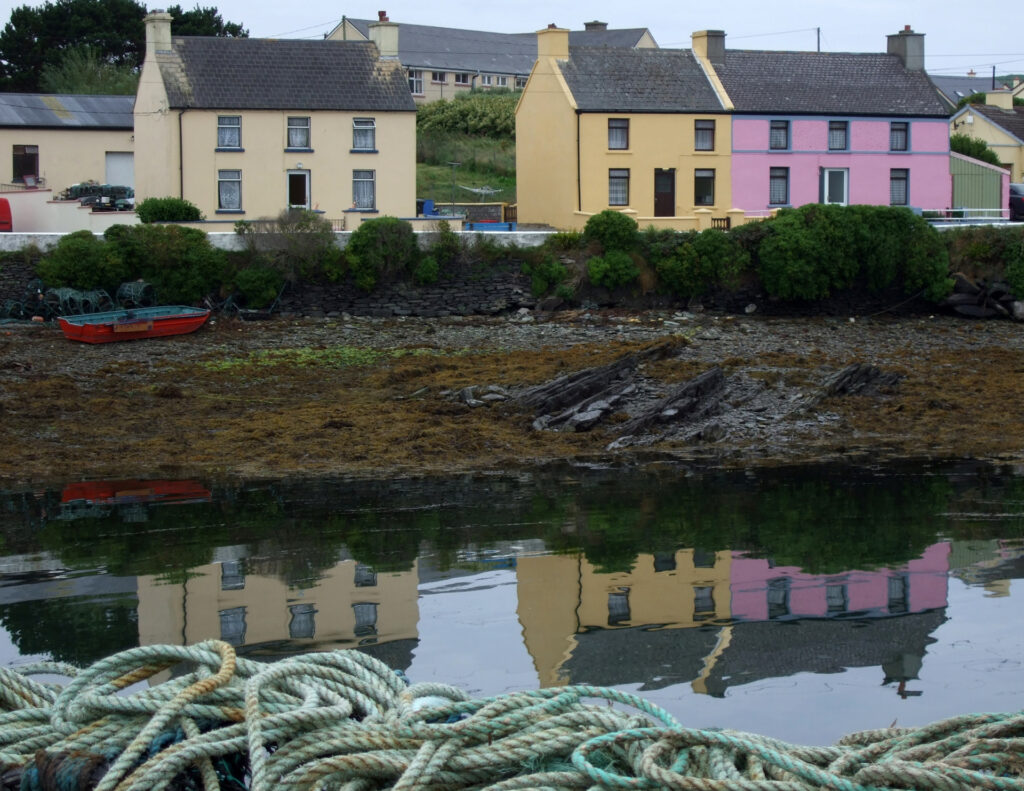
But if the wind-blown water is too rough, you won’t be allowed to scramble across tour-boat decks to reach the one assigned to you:
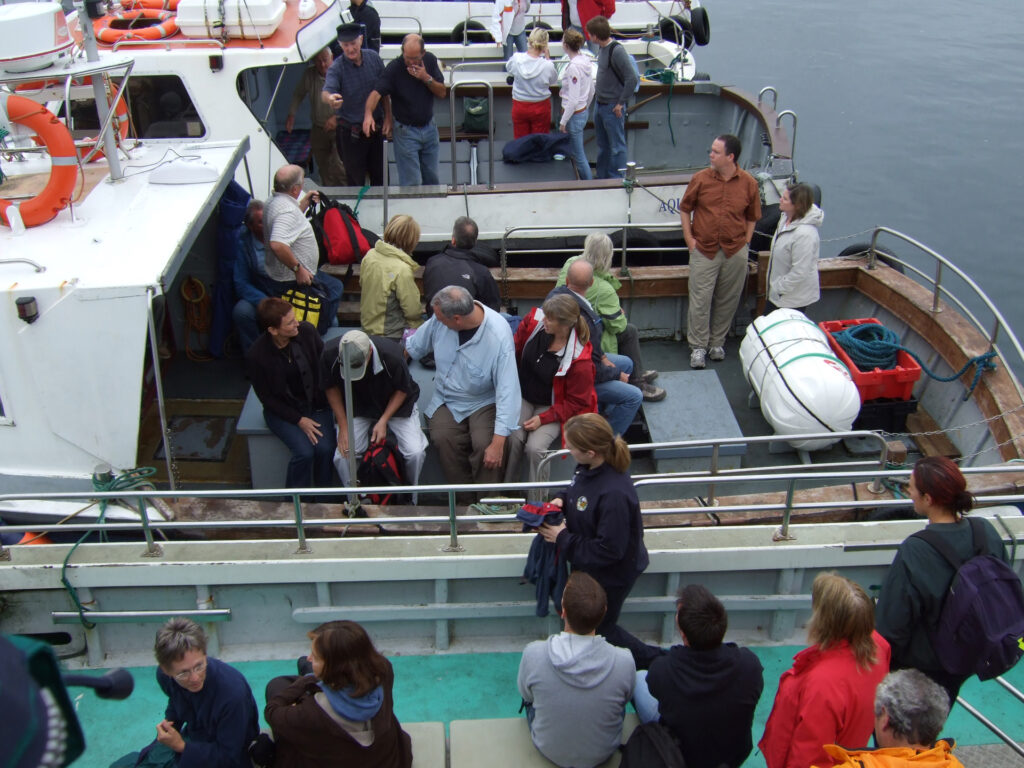
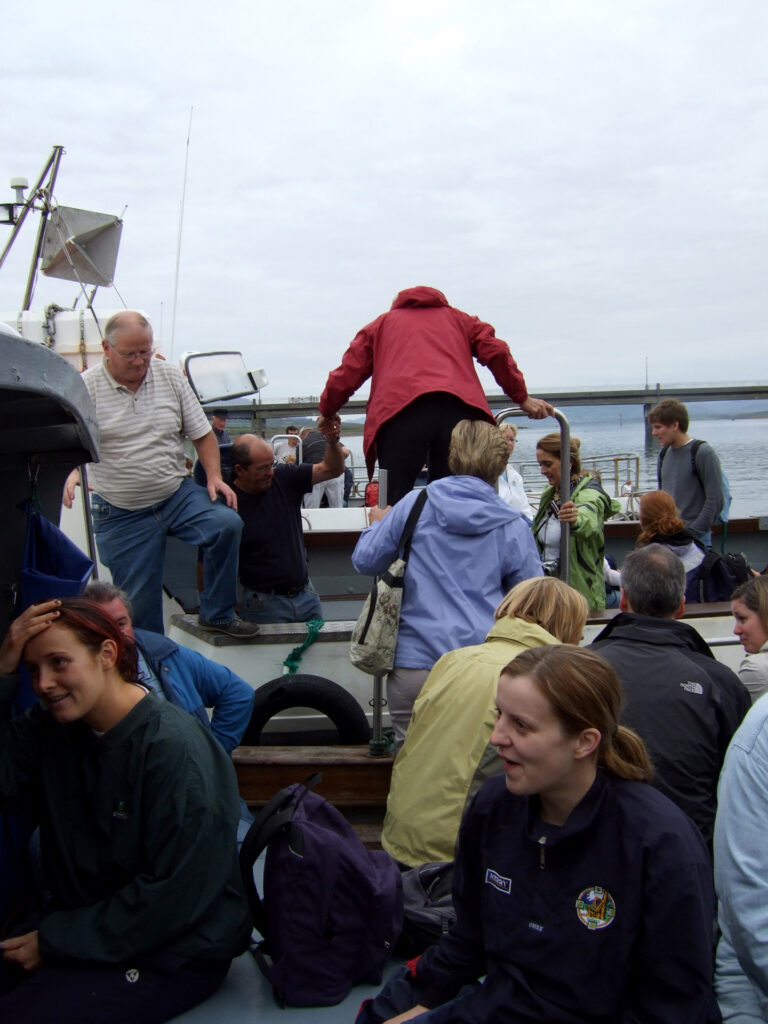
And if waves roll too tall across the 7.2 miles (12 km) between Portmagee and Skellig Michael, your boat won’t venture out among friendly dolphins:
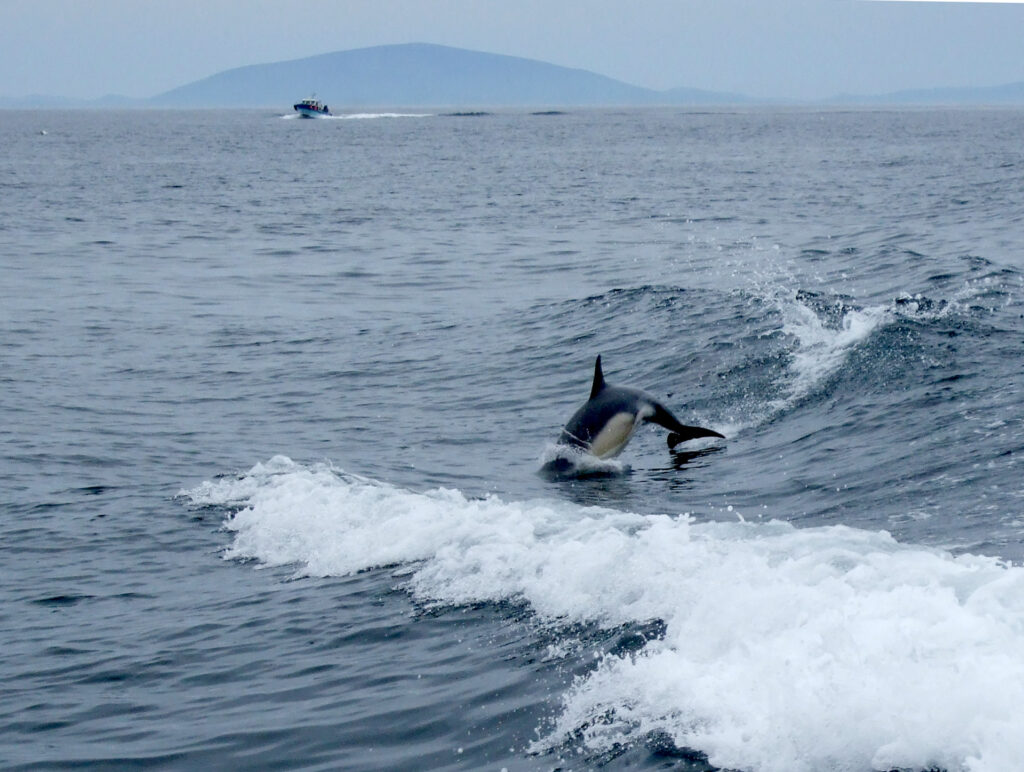
Or cruise past the extremely odoriferous Little Skellig Island bird sanctuary:
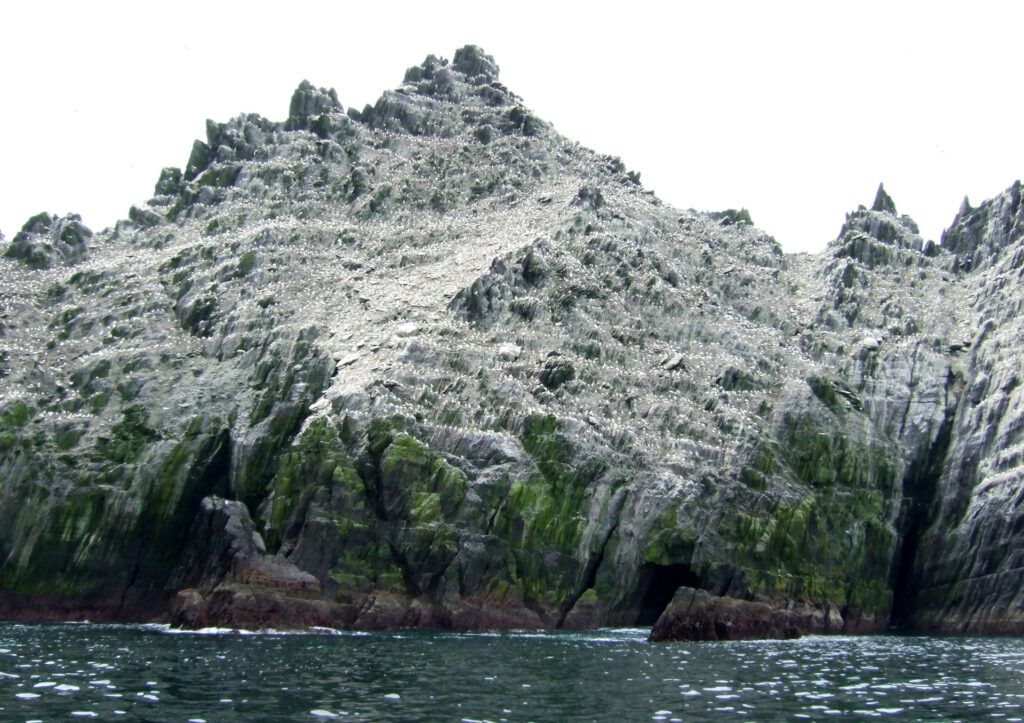
And unless the lord of sea swells is on your side, your captain won’t enter the island’s “cozy” arrival cove:
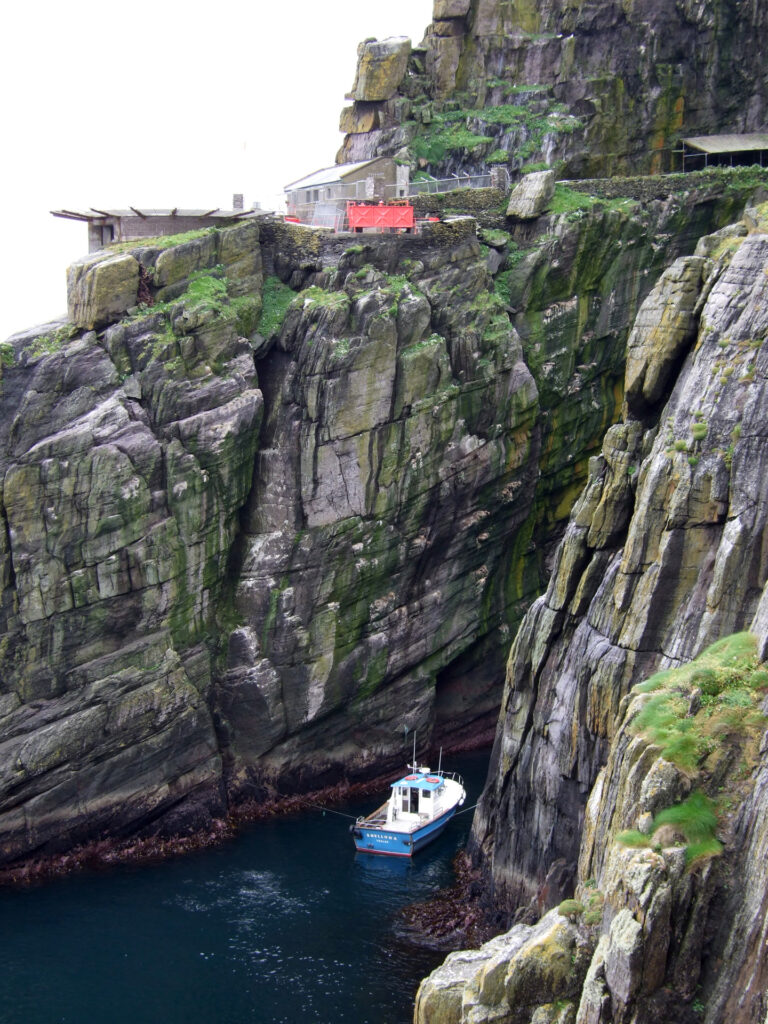
Time to Climb!
If you’ve made it this far, though, more obstacles await. Are the local winds too strong, or the more than 618 (or so) medieval stone steps to the top too dangerously damp?:
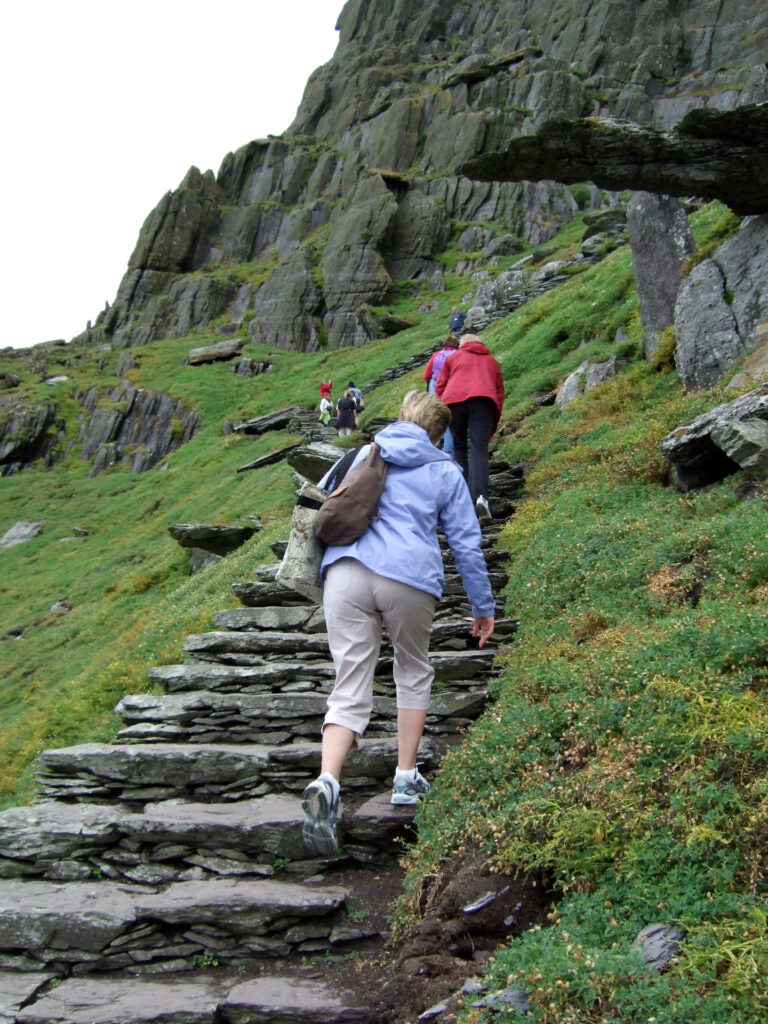
The views along the way were stunning:
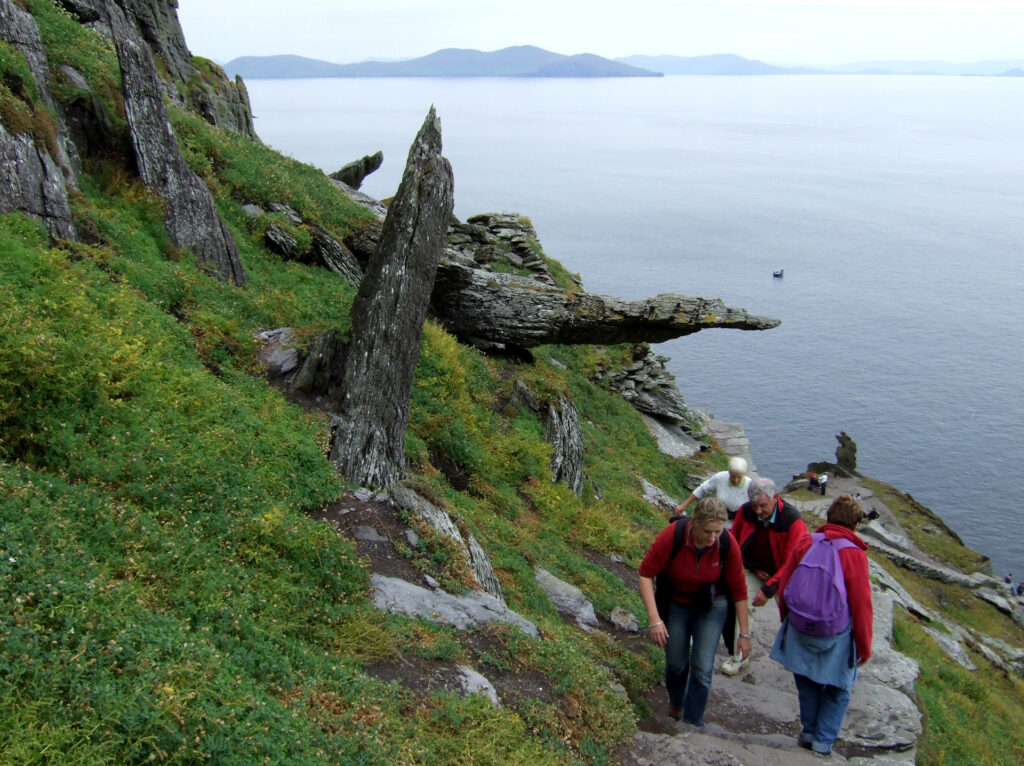
We eventually ascended through a hole at the top of the stairs (around 600 feet above the waves):
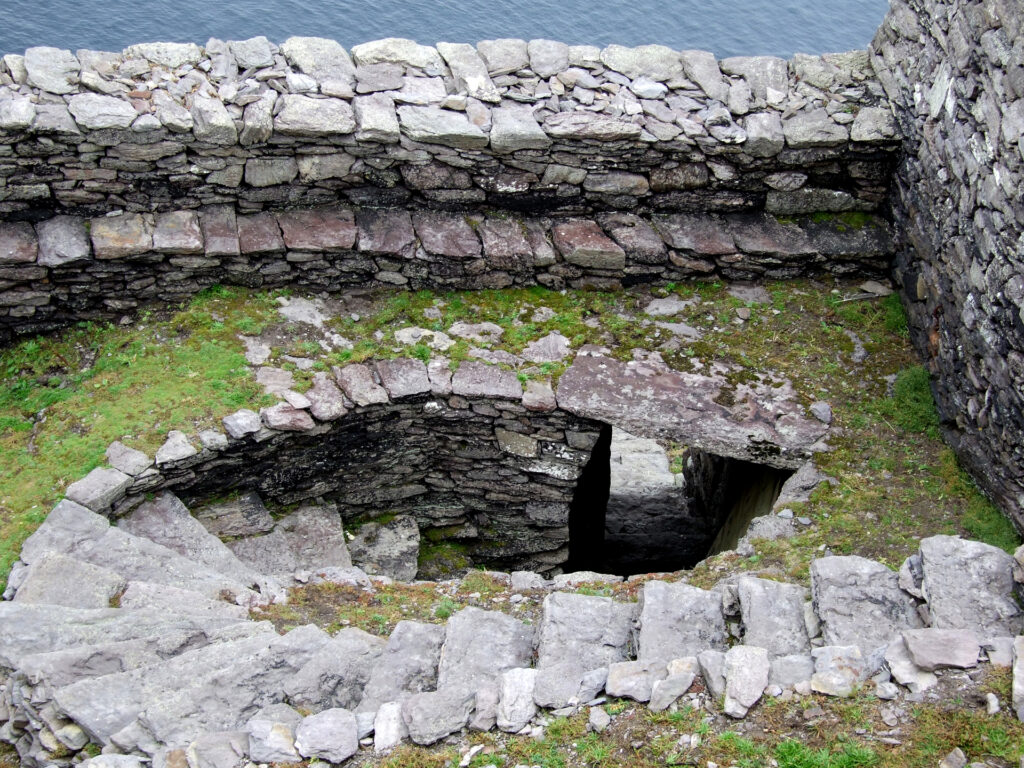
And entered the 1,500-year-old monastery complex built almost entirely of dry-stacked stone:
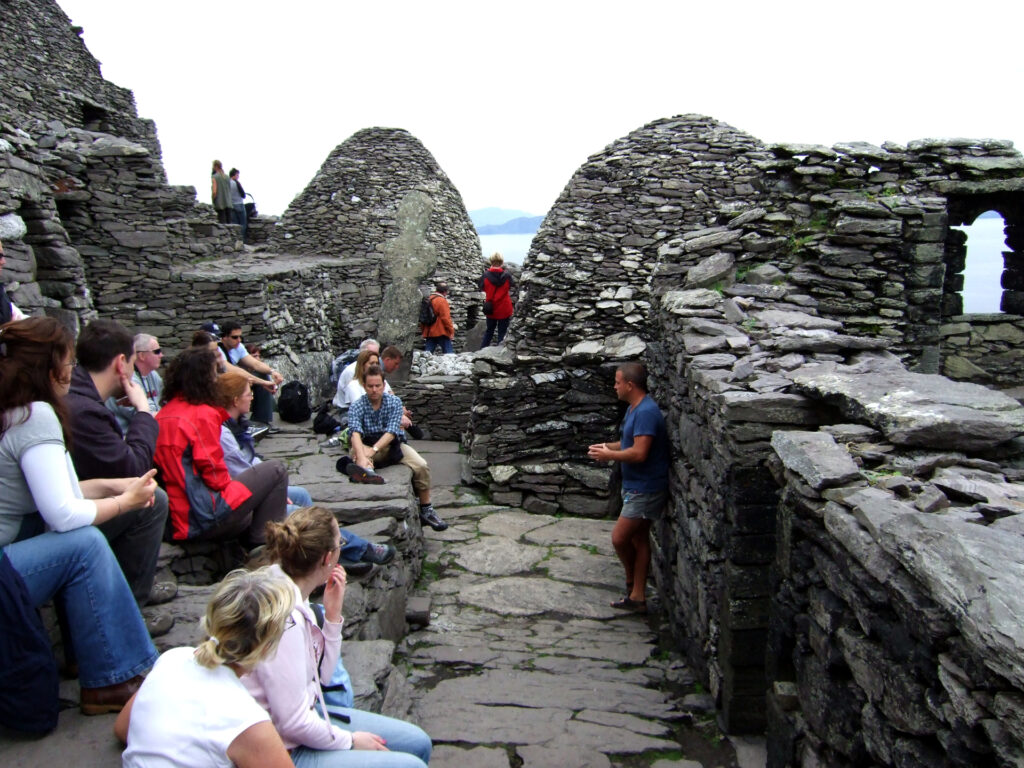
We explored two oratory chapels, six of the monks’ domed beehive huts (or “cells”), a cemetery with stone grave markers, and a more recent medieval church (made of mortared stone):
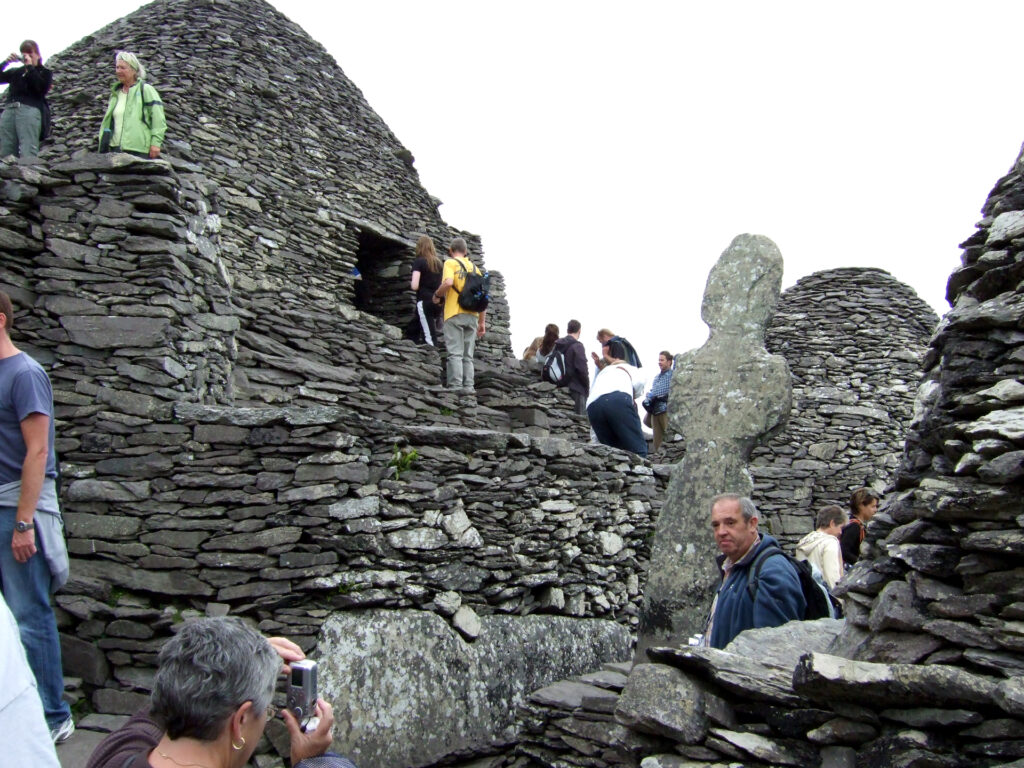
Rugged Christian Monks
Founded between the 6th and 8th centuries, this craggy, inhospitable place probably supported no more than 12 Christian monks (plus one abbot) at a time. Living off their own livestock– plus fish, bird meat, eggs, and vegetables grown on garden terraces– they also used Common Sorrel to curdle milk for cheese, and Sow Thistle in their salads. And they may well have fermented their own alcoholic beverages (but little is known about that).
They also had a great view of Little Skellig Island:
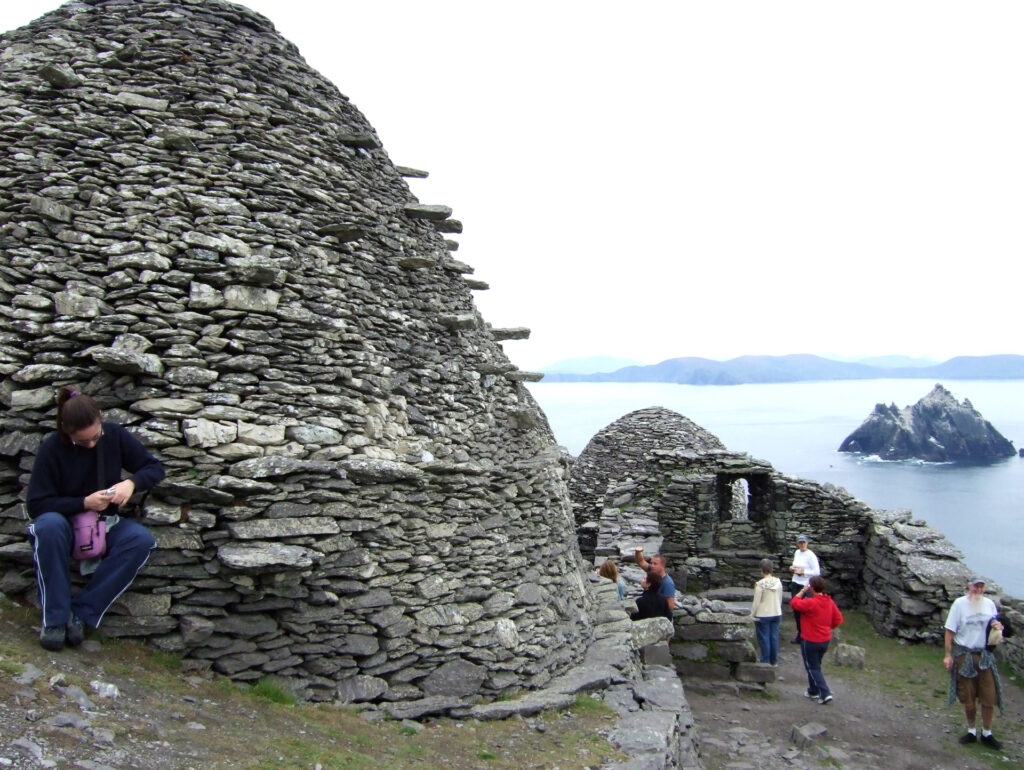
And after a couple hours, we carefully scrabbled back down the 618 (or so) steps:
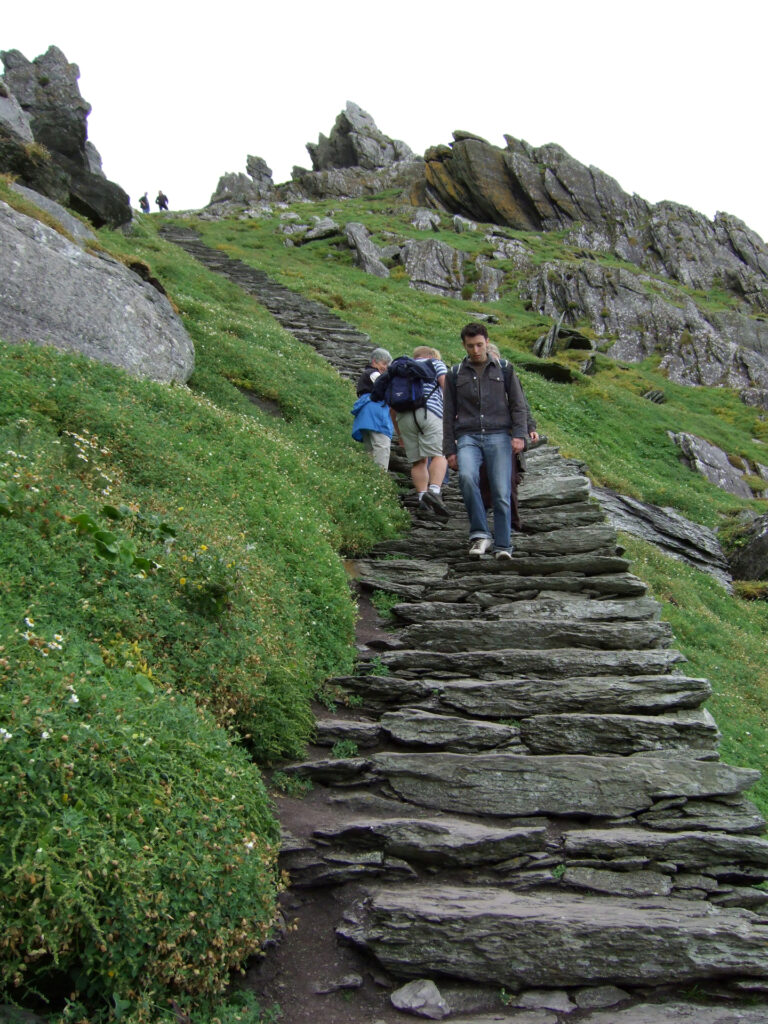
If You Want to Go
Skellig Michael will be an amazing, once-in-a-lifetime, summer pilgrimage for most visitors. But you’ll need to be a flexible planner. Due to the many natural obstacles, professional guides will decide each morning if the day’s tours are possible. And they’ll let you know, so that you can reschedule your climb and reorganize your day (if necessary).
People who fear heights, have mobility issues, or might have trouble climbing so many steps can book a scenic boat cruise around the Skellig islands. But for everyone’s safety, children under 14 aren’t admitted on Skellig Michael.
Even if the weather’s warm at Portmagee, it may be cold atop the island. So wear long pants and bring a coat and gloves. Carry everything in a small backpack, too, because you’ll want to keep your hands free. Except when photographing, of course!
The industrious monks also built and used three separate staircases, but only one is now considered safe. And while the monks may have ascended their island home on sandals (and the expert guides sometimes still do), we should not. Good walking shoes or sturdy hiking boots are the order of the day for us. And don’t even consider trying flip-flops! You don’t want to slip, trip, stumble or fall here. After all, look again at those slopes. According to the Smithsonian, three tourists have fallen to their deaths since 1995. Causes aren’t listed, but it is unwise to venture away from approved tour areas or to sit on dry-stack walls with one’s feet dangling over 600-foot drops.
Skellig Michael in the Movies
Despite the logistic challenges of filming on Skellig Michael, Director JJ Abrams and Production Designer Rick Carter pulled it off admirably when the UNESCO World Heritage Site starred as Luke Skywalker’s sanctuary home “Ahch-To” in “Star Wars: The Force Awakens” and “Star Wars: The Last Jedi.” Aerial shots also appeared in “The Rise of Skywalker.” (There’s even evidence that the Star Wars “Jedi Knights” were partially based on the island’s monks, and SW’s charming “Porgs,” modeled after the island puffins!)
None of this has hurt Skellig Michael’s tourist trade, either. For more about that, read this great 35mmc article by David Marshall.
But those aren’t the only movies filmed here. According to IMDb, others include:
- Billy Wilder’s “The Spirit of St. Louis,” starring Jimmy Stewart as Charles Lindbergh (1957)
- Werner Herzog’s “Heart of Glass” (1976)
- “Byzantium,” starring Saoirse Una Ronan (2012)
- “Love Speaks with Carl Wesley Anderson” (a 2018 religious documentary series)
One still wonders, though. With so much lush, green, unpopulated turf in Ireland, why did those hardy souls chose such a remote, inhospitable home? There are theories, of course– Privacy. Lack of outside interference. And hardships as penance. But the one I like most is that their mountain perch, 600 feet above the sea, was a perfect place to listen for the small quiet voice of God.
NOTE: I reviewed these photos immediately after our climb, but not again in the 16 years since. Today, I’m gobsmacked by the images from the little 6.3-megapixel Fuji F31fd that I carried in my pocket.
–Dave Powell is a Westford, Mass., writer and avid amateur photographer.
Share this post:
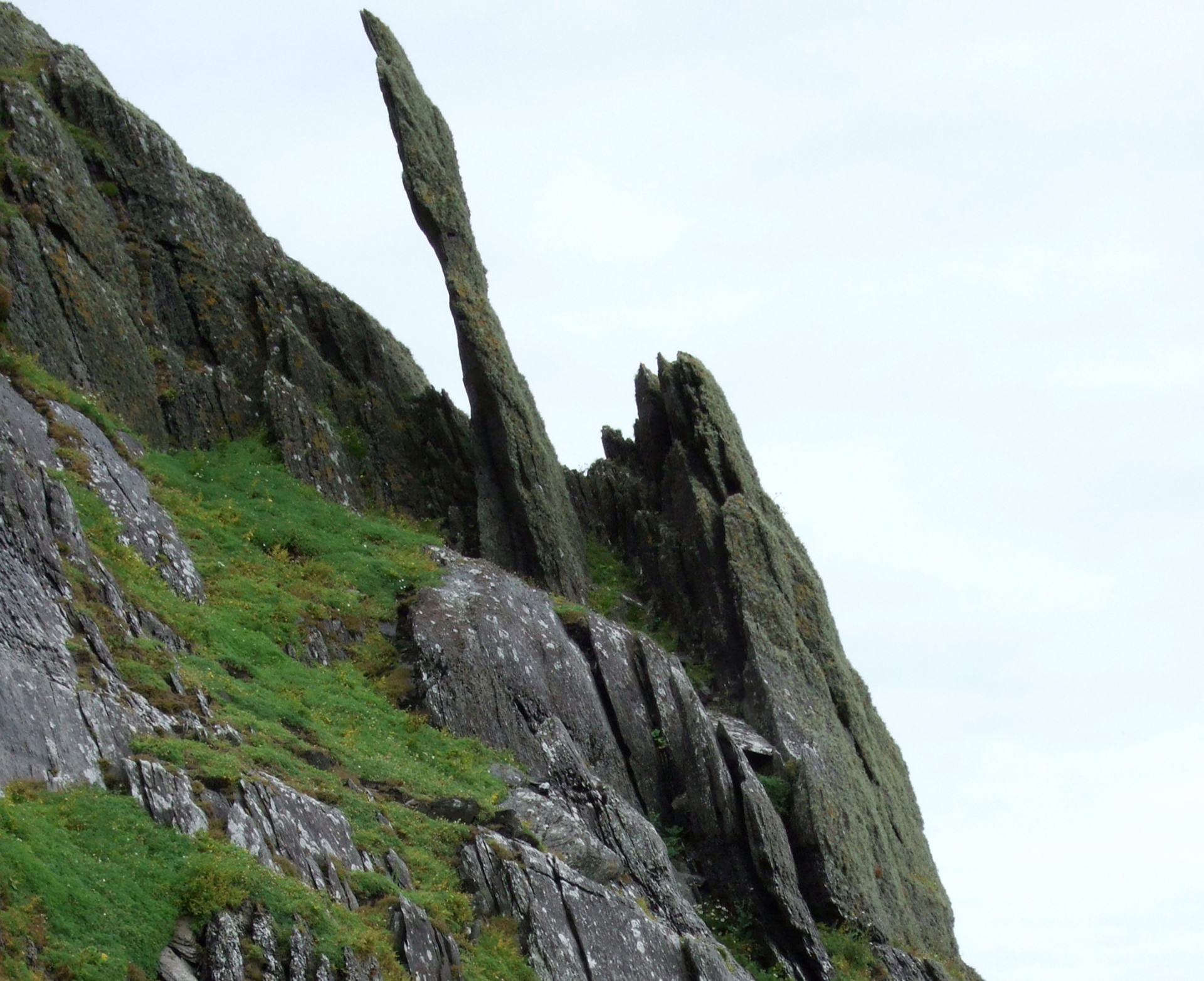



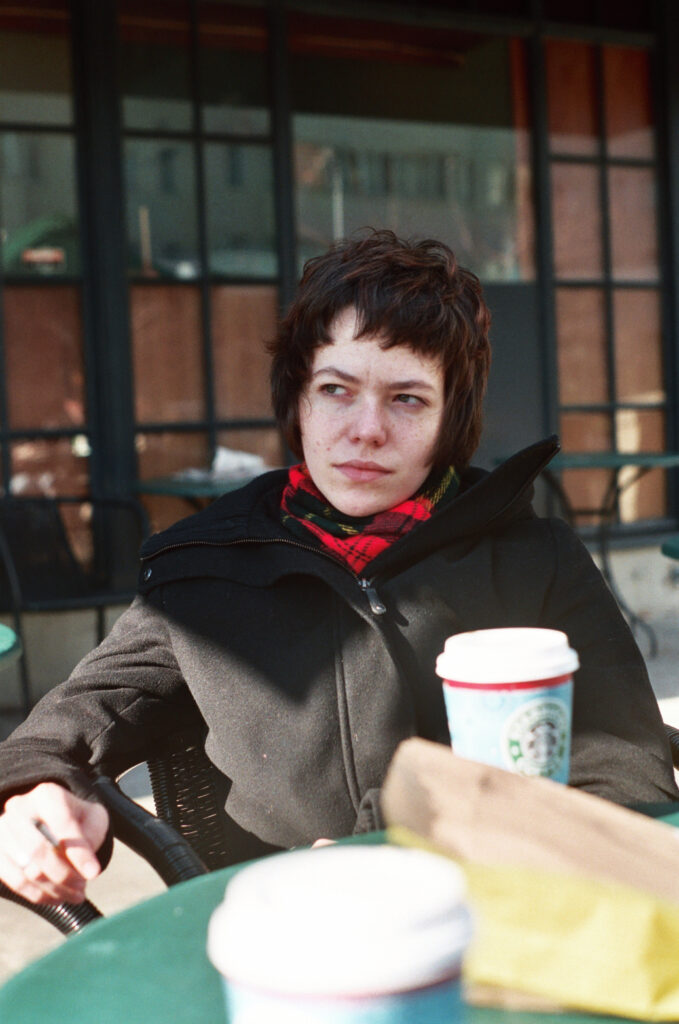




Comments
Ibraar Hussain on Scaling Skellig Michael (with a Fuji F31fd)
Comment posted: 28/05/2025
Enjoyed this and makes
Me want to visit !
Comment posted: 28/05/2025
Roger on Scaling Skellig Michael (with a Fuji F31fd)
Comment posted: 28/05/2025
Comment posted: 28/05/2025
Geoff Chaplin on Scaling Skellig Michael (with a Fuji F31fd)
Comment posted: 28/05/2025
Dave Powell on Scaling Skellig Michael (with a Fuji F31fd)
Comment posted: 28/05/2025
Dave
Gary Smith on Scaling Skellig Michael (with a Fuji F31fd)
Comment posted: 28/05/2025
The architecture of the "hole" entry way is interesting.
Nice set of photos Dave!
Comment posted: 28/05/2025
Comment posted: 28/05/2025
Comment posted: 28/05/2025